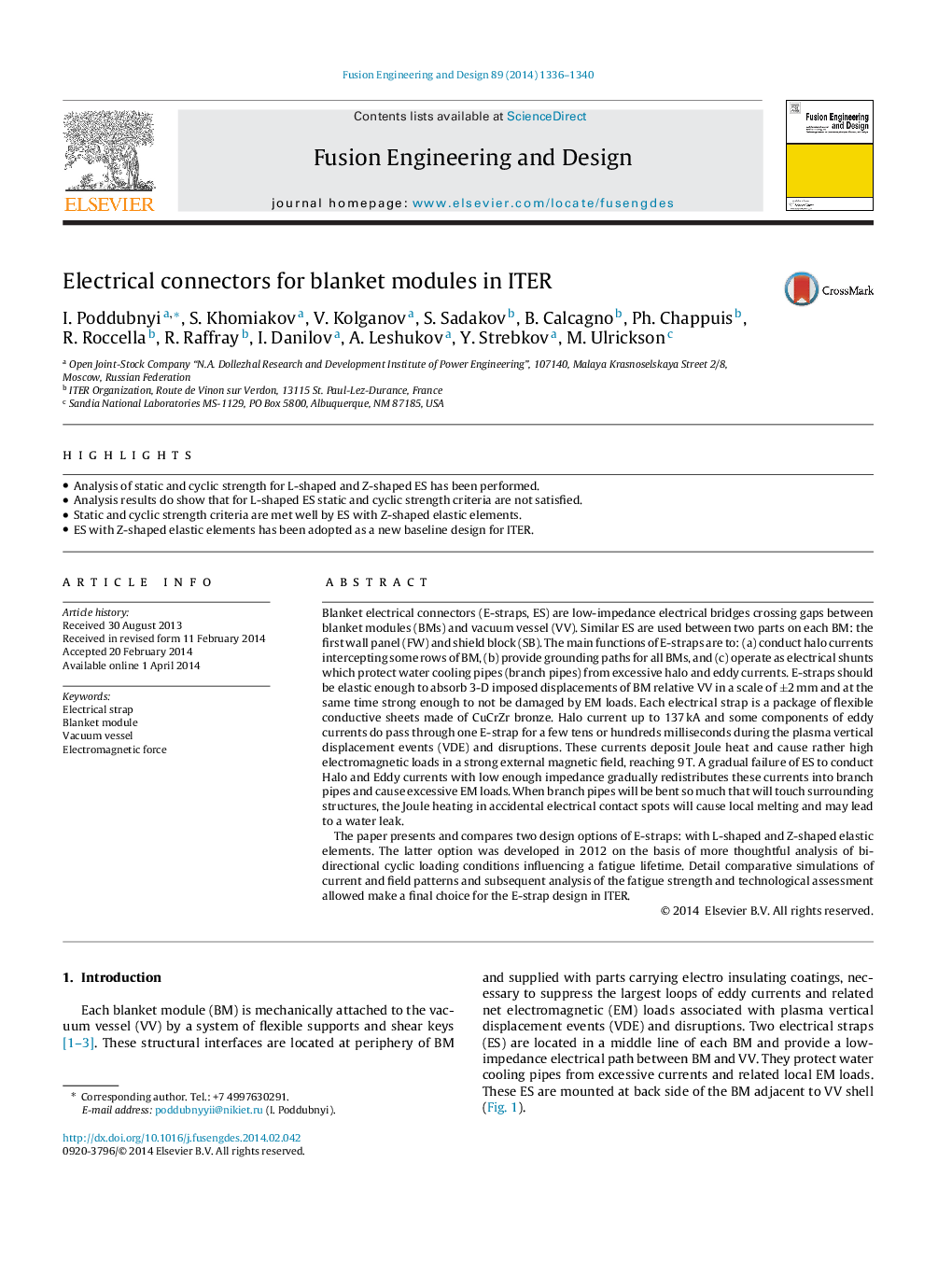| کد مقاله | کد نشریه | سال انتشار | مقاله انگلیسی | نسخه تمام متن |
|---|---|---|---|---|
| 271230 | 504990 | 2014 | 5 صفحه PDF | دانلود رایگان |

• Analysis of static and cyclic strength for L-shaped and Z-shaped ES has been performed.
• Analysis results do show that for L-shaped ES static and cyclic strength criteria are not satisfied.
• Static and cyclic strength criteria are met well by ES with Z-shaped elastic elements.
• ES with Z-shaped elastic elements has been adopted as a new baseline design for ITER.
Blanket electrical connectors (E-straps, ES) are low-impedance electrical bridges crossing gaps between blanket modules (BMs) and vacuum vessel (VV). Similar ES are used between two parts on each BM: the first wall panel (FW) and shield block (SB). The main functions of E-straps are to: (a) conduct halo currents intercepting some rows of BM, (b) provide grounding paths for all BMs, and (c) operate as electrical shunts which protect water cooling pipes (branch pipes) from excessive halo and eddy currents. E-straps should be elastic enough to absorb 3-D imposed displacements of BM relative VV in a scale of ±2 mm and at the same time strong enough to not be damaged by EM loads. Each electrical strap is a package of flexible conductive sheets made of CuCrZr bronze. Halo current up to 137 kA and some components of eddy currents do pass through one E-strap for a few tens or hundreds milliseconds during the plasma vertical displacement events (VDE) and disruptions. These currents deposit Joule heat and cause rather high electromagnetic loads in a strong external magnetic field, reaching 9 T. A gradual failure of ES to conduct Halo and Eddy currents with low enough impedance gradually redistributes these currents into branch pipes and cause excessive EM loads. When branch pipes will be bent so much that will touch surrounding structures, the Joule heating in accidental electrical contact spots will cause local melting and may lead to a water leak.The paper presents and compares two design options of E-straps: with L-shaped and Z-shaped elastic elements. The latter option was developed in 2012 on the basis of more thoughtful analysis of bi-directional cyclic loading conditions influencing a fatigue lifetime. Detail comparative simulations of current and field patterns and subsequent analysis of the fatigue strength and technological assessment allowed make a final choice for the E-strap design in ITER.
Journal: Fusion Engineering and Design - Volume 89, Issues 7–8, October 2014, Pages 1336–1340